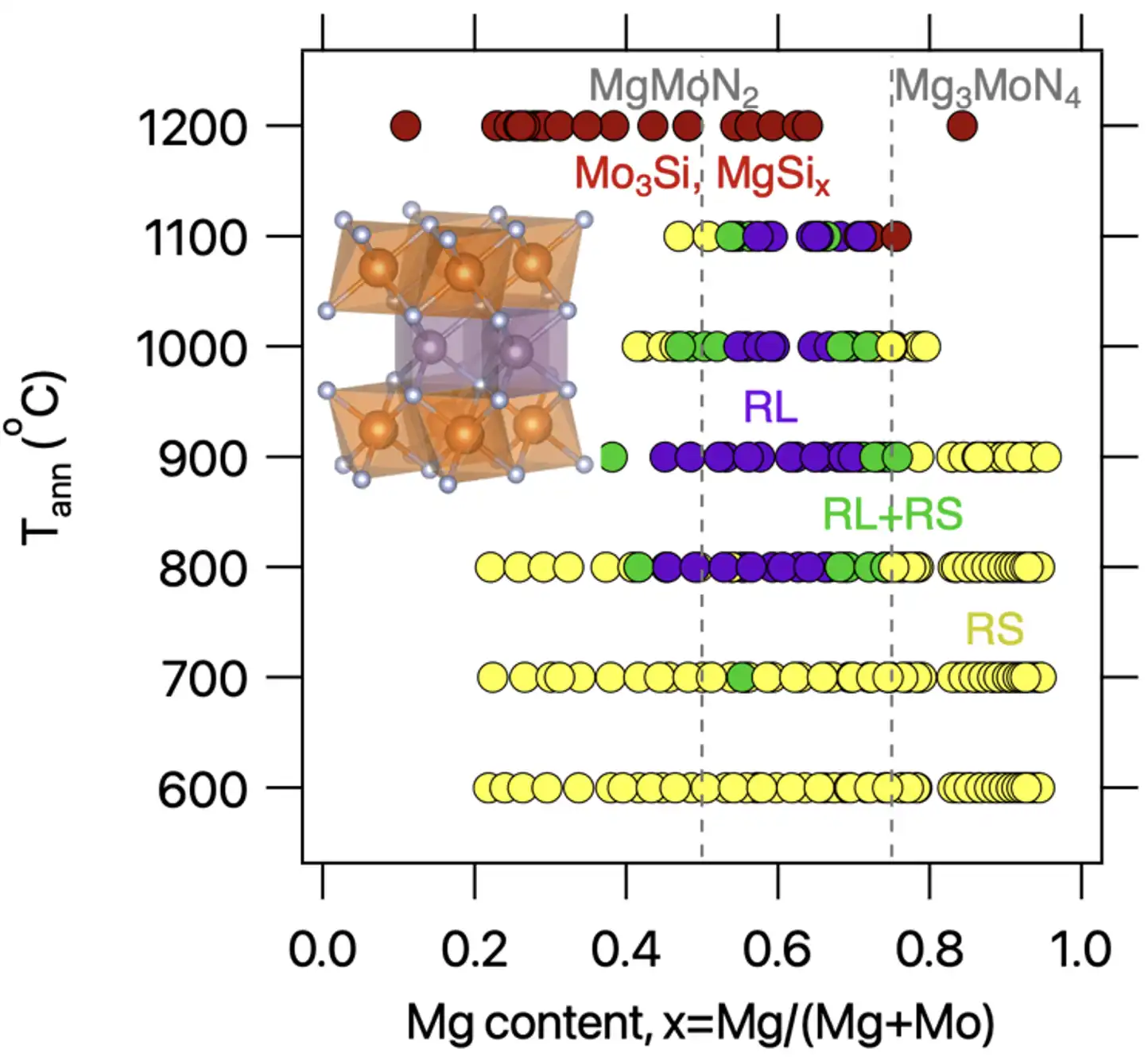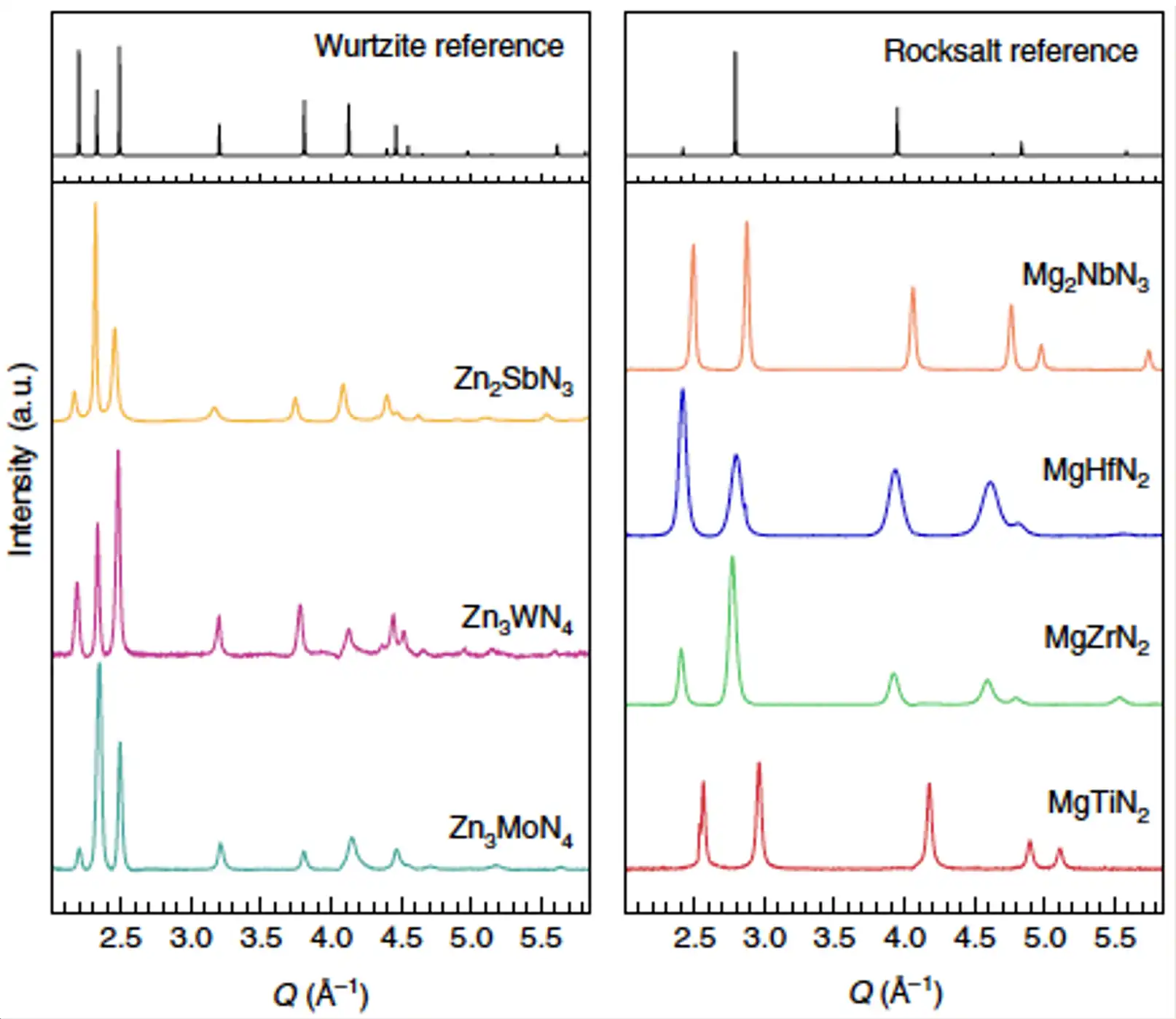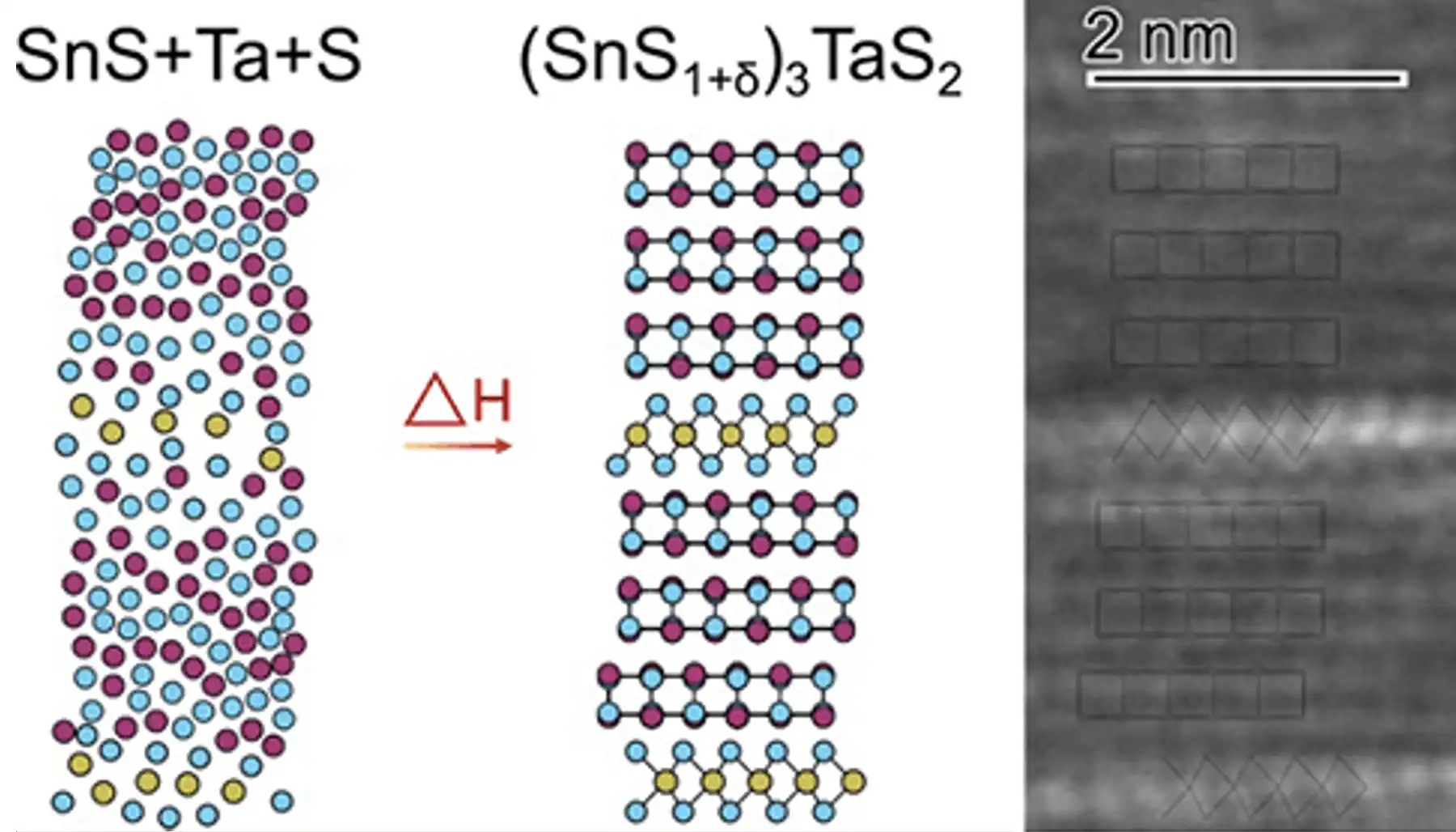Synthesis Science
NLR's materials discovery and design researchers experimentally investigate synthesis pathways of stable and metastable materials with a focus on kinetic control of the synthesis process, including layered 2D-like materials.
There are many computational predictions for which materials should be made for their interesting properties but little theoretical guidance on how to make these materials.

Metastable Materials
Controlled synthesis of metastable solid-state materials away from thermodynamic equilibrium is a significant scientific challenge with important implications to electronic technologies and energy conversion. The reciprocal challenge is how to synthesize thermodynamically stable structures using kinetically limited thin-film deposition methods, that are often used in manufacturing but tend to favor metastable material polymorphs. This research area addresses both questions.
For more information, see:
Synthesis Pathways to Thin Films of Stable Layered Nitrides, Nature Synthesis (2024)
Role of Disorder in the Synthesis of Metastable Zinc Zirconium Nitrides, Physical Review Materials (2022)
Two-Step Solid-State Synthesis of Ternary Nitride Materials, ACS Materials Letters (2021)
Combinatorial Synthesis of Magnesium Tin Nitride Semiconductors, J. Am. Chem Soc. (2020)
Zn2SbN3: Growth and Characterization of a Metastable Photoactive Semiconductor, Materials Horizons (2019).

Nitride Materials
Nitride materials feature many useful properties such as blue LEDs used in energy-efficient lighting or hard coatings used in industrial manufacturing. However, there are many fewer nitride materials compared to other chemistries because nitrides can be very difficult to synthesize using traditional methods. This research area focuses on synthesis of new nitride materials using facile thin-film deposition methods as well as innovative ion exchange bulk synthesis reactions.
For more information, see:
Low-Temperature Synthesis of Cation-Ordered Bulk Zn3WN4 Semiconductor via Heterovalent Solid-State Metathesis, Chemical Science (2024)
Zinc Titanium Nitride Semiconductor Toward Durable Photoelectrochemical Applications, Journal of the American Chemical Society (2022)
Experimental Synthesis of Theoretically Predicted Multivalent Ternary Nitride Materials, Chemistry of Materials (2021)
Synthesis of LaWN3 Nitride Perovskite with Polar Symmetry, Science (2021).

Layered Materials
Layered materials offer the opportunity to design material properties using interactions occurring at nanometer length scales. In principle, the 2D layers in these materials can be arbitrarily sequenced to optimize the heterostructure's properties for a given purpose, but this conventional preparation cannot be easily employed in economic manufacturing environments. We are developing scalable, large-area synthesis science to prepare such heterostructures using conventional thin-film processing technology. In addition, we are synthesizing naturally layered 2D-like materials that can feature 2D electronic and magnetic properties without the trouble of synthesizing truly 2D materials.
For more information, see:
Synthesis Pathways to Thin Films of Stable Layered Nitrides, Nature Synthesis (2024)
Bulk and Film Synthesis Pathways to Ternary Magnesium Tungsten Nitrides, Journal of Materials Chemistry C (2023)
Synthesis of Tunable SnS-TaS2 Nanoscale Superlattices, Nano Letters (2020).
Projects
Our synthesis science work is funded by the U.S. Department of Energy through the Office of Science, Basic Energy Sciences.
The objective of this project is to gain a fundamental understanding and control of the synthesis of new metastable yet long-lived ternary nitride materials under non-equilibrium conditions. The proposed approach to metastable ternary nitrides will use kinetic synthesis methods that lower energy barriers towards specific products.
The goal of this project is to develop a fundamental understanding of cation order parameter and its impact on properties in II-IV-V2 semiconductors, which have structure and properties similar to III-Vs but with a doubled conventional unit cell size because group II and IV elements substitute for group III cations.
Research Collaborators
Sage Bauers – Thin-film growth
Rebecca Smaha – Sputtering and bulk synthesis
Brooks Tellekamp – Molecular beam epitaxy
Vladan Stevanovic – Theory and computations (Colorado School of Mines)
Contact
Share
Last Updated Dec. 6, 2025
